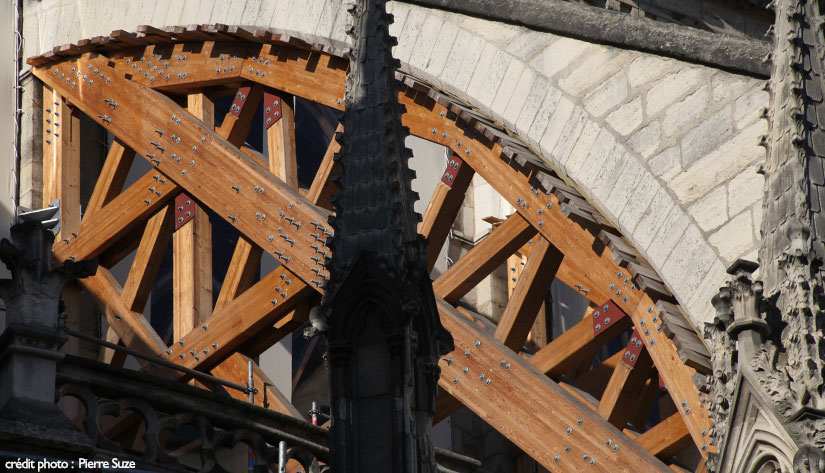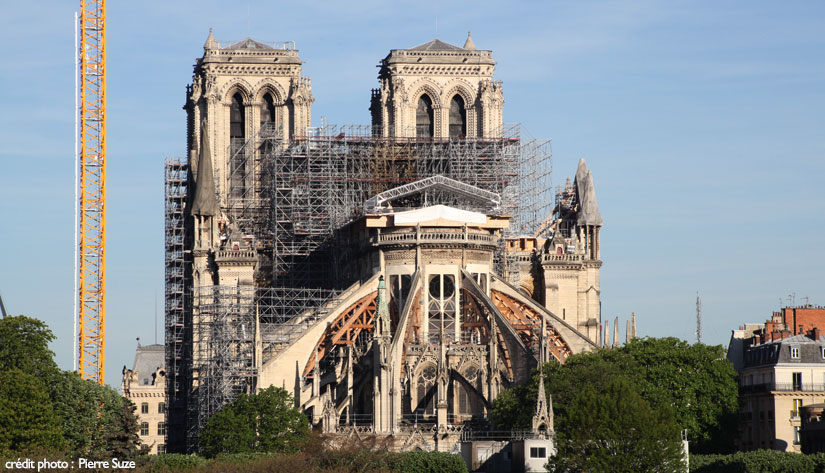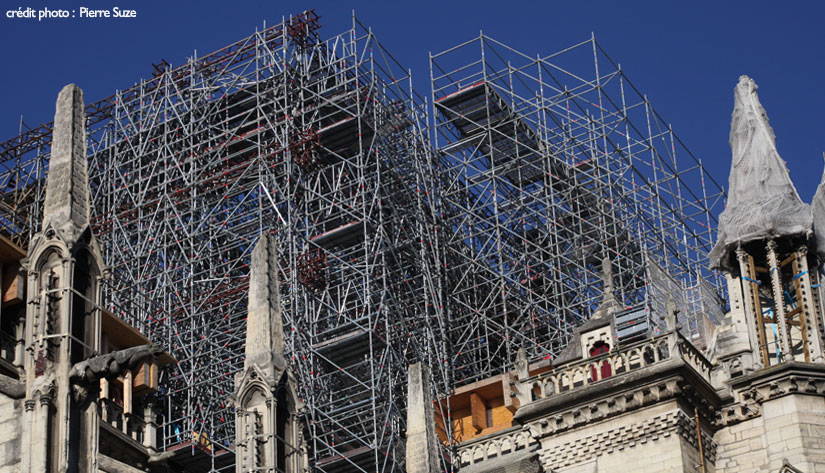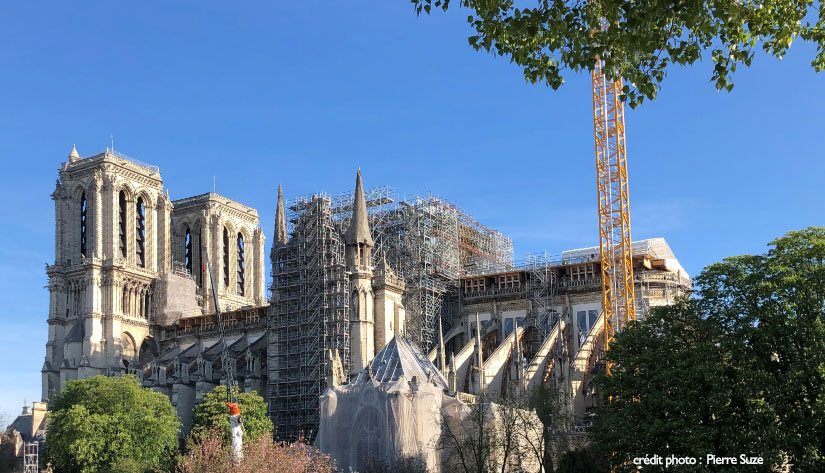-
View article
 #ACT2028
#ACT2028Olivier Gavalda, Chief Executive Officer of Crédit Agricole S.A., explains ACT 2028
2025/11/18
Notre-Dame: one year after the fire
A collateral victim of the epidemic that saw over half the planet placed under lockdown in March, work on the “construction project of the century” has come to an abrupt halt. So the project is spending its first birthday – when we would have liked to be able to hear the sound of sawing, welding and scraping to reassure us that everything was on track with the timetable announced by the President – cloaked in religious silence.
Will Europe’s most visited monument reopen to the public in 2024?We provide an update on the progress of the work and the chances of saving France’s gothic gem.

Is the cathedral still in a state of dire emergency?
The restoration proper is not due to start until 2021. For the time being, the focus is still on making the building safe and clearing away debris (most of which, given its prestigious provenance and age, is considered “relics” and must therefore be meticulously catalogued and classified).
Timber brace fitted to the underside of a flying buttress to strengthen it (photo: 15 April 2020)
Work to dismantle the 10,000 scaffolding tubes twisted and welded together by the fire was about to begin when the lockdown was imposed. Rope access specialists, known as “squirrels”, were ready to be lowered down to saw the tubes. This tricky four-month operation – a “project within the project” – has therefore been interrupted. However, General Jean-Louis Georgelin, who chairs the public establishment responsible for the conservation and restoration of Notre-Dame, is looking at the possibility of it partially resuming, gradually and on a targeted basis.
Also, while the nave has been cleared by robots, debris still needs to be removed from above the huge vault. In theory, these tasks are due to be over and done with by this summer, while work to dismantle and clean the great organ will be completed sometime between now and 2024.
The metallic structure, weighing 250 metric tons, continues to put pressure on the cathedral’s vaults. However, with the structure drawn towards the hole left by the spire as it fell, the whole thing is now encircled by three series of 28-metre-long girders to prevent the scaffolding from coming apart or collapsing in on itself. These new structures are supported by a 40-metre-high floor (photo: 15 April 2020)
Permanent rain protection also needs to be installed.
But the building has already been seriously strengthened over the past twelve months, despite events that have slowed the work down (lead pollution, strong winds last autumn, etc.): one of the most spectacular operations was the installation of timber braces under the flying buttresses, both to strengthen them and to prevent excessive pressure on the building, previously balanced out by the roof and its frame.
One year ago, almost 10,000 metal tubes were twisted and welded together by the flames (photo: 15 April 2020)
While it is still too early to confidently claim that the cathedral is no longer in danger, it is encouraging to note that all its treasures have been saved and sensors deployed to identify the slightest movement are not detecting anything out of the ordinary. “It’s not moving”, said one on-site specialist, reassuringly.
----------------------------------
» See the other articles in this feature:
- Paris’s firefighters: the heroes of Notre-Dame (15 April 2020)
- The Crédit Agricole ? Pays de France Foundation is helping rebuild Notre-Dame (15 April 2020)
- Heritage conservation donations: how do they work? (17 April 2019)












